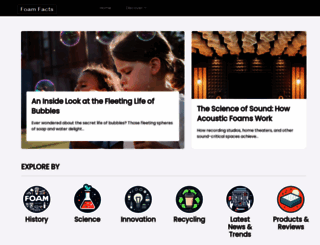Page Load Speed
2 sec in total
First Response
75 ms
Resources Loaded
1.2 sec
Page Rendered
718 ms

About Website
Welcome to foamfacts.com homepage info - get ready to check Foamfacts best content for United States right away, or after learning these important things about foamfacts.com
Learn more information about the health & environmental aspects of polystyrene foam through Foam Facts. We also share reliable foam facts related to recycling. Foam recycling is often mistakenly refer...
Visit foamfacts.comKey Findings
We analyzed Foamfacts.com page load time and found that the first response time was 75 ms and then it took 1.9 sec to load all DOM resources and completely render a web page. This is quite a good result, as only 35% of websites can load faster.